Garmin Varia Vision es una apuesta bastante especial por parte de la firma americana. Presentado por sorpresa en el CES de Las Vegas de 2016, nadie esperaba que Garmin se aventurara en el sector de los conocidos como «Head-Up Display».
Varia Vision es, en definitiva, una pantalla de datos remota. Pero Garmin no ha inventado un nuevo producto, ni en concepto -que es similar a lo que Google presentó hace ya unos cuantos años con Google Glass-, ni tampoco en el enfoque deportivo del dispositivo, pues Recon Jet, ahora en manos de Intel, lleva unos años en el mercado (aunque en ese caso es un dispositivo totalmente autónomo). Pero en lo que sí es especial es precisamente en ese detalle: no es autónomo, se trata de un accesorio que se añade a tu dispositivo actual, tanto para lo bueno como para lo malo.
La unidad de prueba ha sido cedida amablemente por parte de Garmin, y como ocurre con todos los dispositivos cedidos, en los próximos días lo devolveré. No hay ningún tipo de contra prestación por una opinión positiva o menos negativa por parte de la marca. Mi opinión es totalmente independiente y desde el punto de vista de alguien que practica deporte como tú.
He pasado unas cuantas semanas probando Garmin Varia Vision, así que tengo una visión (soy un crack con los juegos de palabras) bastante clara de qué ofrece y qué no ofrece el nuevo producto de Garmin. Acompáñame y lo descubrimos juntos.
Navegar a secciones específicas
Desempaquetado
Garmin Varia Vision es un producto relativamente sencillo. Y como sencillo que es, dentro de la caja no vas a encontrar muchas cosas.
La presentación es la habitual: una caja alargada, muy similar a la del resto de dispositivos Edge de ciclismo. Aunque con ese toque de resplandor dorado detrás del Varia Vision más bien parece que estés comprando el último disco de Raphael (por cierto, ¿sabías que tiene un disco de uranio?).
La sencillez sigue latente en el momento que abres la caja. Porque lo único que te vas a encontrar es «un palo». O una varita mágica, pero se quedaría bastante corta para que Harry Potter pudiera hacer cualquier hechizo, porque sólo mide 60mm de largo (y 19,7×19,8mm de grosor).
En definitiva, que si le das esto a alguien que no lo conozca no va a tener ni idea de para qué sirve. Y probablemente lo primero que quiera hacer es remover el café con él. Pero lo desaconsejo, porque la resistencia al agua está certificada a IPX7, suficiente para aguantar las inclemencias del tiempo cuando montes en bicicleta: lluvia, nieve o incluso inmersión accidental a 1 metro de profundidad por si te caes a un charco. Pero lo siento triatletas, no podéis usarlo con las gafas de natación.
Debajo del propio dispositivo encontrarás el resto de chucherías. El manual (ese gran desconocido), el cable de carga (y que también usarás para actualizar el dispositivo cuando haya nuevas versiones de firmware), un par de soportes, diferentes gomas elásticas para adaptarse a varios tipos de monturas y una funda donde podrás guardar tu Varia Vision cuando no lo estés usando.
El soporte es de un concepto similar al de las unidades Edge, en el sentido que debes colocarlo y girarlo un cuarto de vuelta. Pero a diferencia del soporte para la bicicleta, en este caso no hay un «click» que bloquee el dispositivo en una posición, ya que es necesario poder desplazar el dispositivo hacia arriba o hacia abajo para una correcta ubicación.
Puedes montar el soporte en la patilla izquierda o derecha de las gafas, pues la pantalla girará en para mostrar siempre la información en el sentido correcto. Pero esto y más lo explicaré en la siguiente sección.
Funcionamiento básico
Una de los mejores aspectos que tiene Varia Vision es la facilidad de instalación que ofrece, y es que el hecho de usar un soporte de desmontaje rápido es una solución fantástica, no sólo por ser totalmente universal y poder montarse en tus gafas actuales, sino porque ponerlo y quitarlo es fácil y rápido.
Como has visto antes, dispones de dos soportes para poder instalar en dos pares de gafas diferentes, junto con un montón de gomas elásticas de diferentes longitudes que permitirán adaptar el soporte al tamaño de la patilla de la montura.
Una vez acoplado puedes dejar el soporte ahí el tiempo que quieras, pues no molesta en absoluto.
El dispositivo se coloca de la misma forma que colocas el Edge en su soporte, girándolo. Y como no tiene un «click» que lo bloquee, podrás ponerlo más arriba o más abajo para encontrar el punto ideal para tu visión.
Además el brazo que soporta la pantalla es flexible, por lo que podrás moverlo para acercarlo o alejarlo del cristal de las gafas.
Además de tener el brazo flexible, el propio soporte puede rotar unos grados hacia arriba o hacia abajo que te permitirá encontrar el ángulo idóneo para ver la pantalla de forma correcta.
En las fotos lo verás instalado en la patilla derecha, pero también puedes hacerlo en la izquierda, ya que hay un acelerómetro que detecta la orientación y gira la pantalla de forma automática. Simplemente colócalo en el ojo donde mejor vista tengas o donde menos problemas de enfoque cerca/lejos tengas (que, en mi caso, es el ojo derecho).
Sea como sea, creo que instalarlo en el lado derecho es el que más lógica tiene ya que los vehículos que se incorporen por ese lado normalmente nos deberán ceder el paso (se supone…), por tanto donde mayor claridad visual querrás tener es en el lado izquierdo. Rotondas, cruces o desvíos, será a los vehículos de la izquierda a los que tendrás que ceder el paso, por lo que son los que más te interesa tener controlados y donde no quieres tener ningún tipo de ángulo muerto.
En el dispositivo encontrarás sólo un botón, el de encendido y apagado del dispositivo.
El control de la unidad se hace desde un panel táctil que hay en el lateral. Simplemente debes deslizar el dedo de izquierda a derecha o viceversa para pasar de una pantalla a otra. Es imperceptible a simple vista, pero es la superficie de tacto gomoso que se encuentra por debajo del logo de Garmin y que hace de brazo de sujeción de la pantalla.
Hay alertas por vibración para diferentes eventos. Notificaciones del teléfono, vueltas, avisos de vehículos aproximándose en caso de estar conectado a un radar Varia, etc. Según qué evento esté notificando la vibración será más o menos potente, y lo cierto es que en algunas ocasiones puede llegar a ser algo molesto (prueba a ponerte un vibrador en la cabeza). Lo que no tiene, eso sí, son avisos sonoros.
Configuración
Como no hay botones que puedas tocar en el propio dispositivo, toda la configuración deberás realizarla desde tu Garmin Edge (o Garmin Vivoactive HR que, a fecha de escribir esta prueba, es el único reloj compatible en teoría, aunque aún debe recibir actualización para soportarlo).
Antes de configurar las pantallas, primero tendrás que emparejarlo. Para ello dirígete al menú de sensores de tu Edge y realiza una búsqueda de dispositivos.
Tras encontrarlo, simplemente lo añades y ya estará conectado para siempre. Lo encontrarás en el menú de sensores y lo identificarás fácilmente por el icono de las gafas.
Si entras dentro de las opciones del sensor, podrás ver las diferentes opciones que puedes modificar.
En primer lugar encontrarás los ajustes de pantalla, donde podrás variar el brillo, el color de fondo o el cambio automático de pantalla. También puedes optar por establecer el color de pantalla de forma automática, de esa manera el fondo será blanco durante el día y negro durante la noche, para evitar dejarte cegado cuando haya poca luz ambiente.
El siguiente menú te permite configurar las diferentes pantallas de datos.
Las pantallas son totalmente independientes de lo que configures en tu Edge. Por tanto puedes tener unos datos en el ordenador y otros diferentes en la pantalla. Esto es fantástico, ya que puedes dejar los datos que más te interese controlar de forma constante en la pantalla (potencia, cadencia, frecuencia cardíaca, etc.) y dejar los menos importantes para la pantalla del Edge, como la velocidad, distancia recorrida o tiempo total de entrenamiento.
Y no pienses que sólo podrás ver unos pocos datos. La cantidad disponible es abrumadora, y no sólo como campo de datos, sino que también podrás mostrar diferentes gráficas de barras. También es posible configurar el número de datos a aparecer en cada pantalla, desde sólo uno hasta un máximo de cuatro. Eso si, las gráficas sólo podrán ubicarse en campos amplios (para dos datos), ya que necesitan de ese espacio para mostrar además de las barras, datos como media y máxima. Por tanto las gráficas de barras sólo podrás seleccionarlas en pantallas con uno, dos o tres datos; pero no cuando sean cuatro los seleccionados.
Hay cinco pantallas que se pueden configurar con los datos, y además se pueden activar pantallas para segmentos, navegación y virtual partner.
En la pantalla del Edge podrás ver tanto la distribución de pantallas que estás eligiendo como la ubicación de cada una de ellas. Y a medida que vas haciendo cambios (por ejemplo, seleccionar 3 datos en una pantalla y que uno sea velocidad), se irán actualizando directamente sobre la pantalla, por lo que además de ver la distribución en la pantalla del Edge podrás ver en directo cómo queda en el Varia Vision.
A continuación te dejo una serie de fotos donde podrás ver las diferentes configuraciones que puedes ir seleccionando. En las estas pantallas verás dos bloques, no quiere decir que todos los datos que se vean en las imágenes son los que puedes seleccionar para visionar, sino que se muestran dos opciones en esa misma imagen.
Y así es como se verá algunas de ellas en la pantalla de Varia Vision.
Como te puedes dar cuenta, es algo tímido y no le gusta salir en las fotos. Sin duda, de los dispositivos que más difícil me lo han puesto para sacarle fotos y poder enseñároslas para que tengáis toda la información. La calidad de la imagen es bastante mejor de la que se ve en fotos, pero es difícil conseguir una imagen totalmente nítida de la pequeña pantalla de Garmin Varia Vision.
Usando Garmin Varia Vision
Más allá de las posibilidades de configuración, aquí lo importante es el uso del día a día. ¿Cómo se ve? ¿Es cómodo? ¿Evita tener que mirar la pantalla del Garmin Edge de forma constante? Todo eso y mucho más es a lo que voy a intentar dar respuesta a continuación.
En primer lugar, hablarte de la calidad de la pantalla. Es buena, muy buena. Tanto en calidad de colores como en resolución. Son 428×240 pixeles, que para un tamaño de pantalla tan reducido produce una imagen muy viva, con gráficos nada pixelados y de buena calidad. El brillo de la pantalla es bueno y gracias al sensor de luz ambiental que incorpora puede hacer el cambio de fondo blanco a fondo negro de forma automática, evitando que cuando hay poca iluminación, ya sea por ser de noche o entrar en un túnel, te deje cegado por cerrar la pupila debido al exceso de iluminación.
Además del sensor de luz ambiental también hay un acelerómetro, por lo que puedes poner la pantalla en un lado u otro de las gafas, y la imagen rotará para mostrarse siempre de forma correcta. Y no sólo eso, cuando metas la rueda en una zanja y salgas volando por encima del manillar cayendo de forma acrobática sobre tu espalda, podrás seguir viendo la pantalla. Lo importante es lo importante, y no es otra cosa que comprobar si ha bajado tu media de potencia, no si te has hecho daño.
En cuanto a comodidad no he tenido ninguna pega al respecto. El peso no es elevado y una vez montado sobre las gafas, aunque estas sean ligeras, no produce una descompensación excesiva. Eso sí, es posible que las gafas caigan un poco de ese lado, aunque dependerá de cada montura. En el caso de las gafas que yo utilizo puedes ver que quedan ligeramente ladeadas en el lado donde se encuentra instalado Varia Vision.
Evidentemente, la visión periférica del lado donde coloques la pantalla puede verse afectada. No en vano estamos poniendo algo delante de nuestro ojo. La visión hacia ese lado queda ligeramente bloqueada pero no es excesivamente incómodo. Es decir, no me impide ver lo que puede acercarse por la derecha, pero por ejemplo sí puede resultar incómodo si estoy hablando con alguien que esté situado a mi derecha. Sí hay que tener en cuenta que se crean posibles ángulos muertos de visión.
Esto es teniendo en cuenta que hablamos de un casco normal. Cuando el caso es aero ya hay otro tipo de complicaciones que dependerán directamente del propio casco.
En el modelo que yo tengo no he tenido problema en usarlo, aunque el casco queda por encima de las gafas. Esto provoca que no pueda acceder al panel de control lateral, por lo que la única opción que queda para cambiar de pantalla es que lo haga de forma automática.
Pero como digo, esto depende totalmente de cada casco.
Hay libertad a la hora de colocarlo. Puedes ponerlo más arriba o más abajo, pues la pantalla puede girar para ajustarse al ángulo apropiado con respecto al ojo. Yo he encontrado que la ubicación más cómoda es «en el centro de la mirada», que es donde más rápido podrás fijar la vista.
He probado a llevarlo en la parte inferior o superior, pero no me ha resultado cómodo en el sentido de tener que apartar bastante la mirada de la carretera al ir a buscar la imagen a un lugar tan separado.
Pero tienes que estar fino de la vista y que el enfoque cerca-lejos no te plantee problemas. Aquellos que sufran de vista cansada pueden tenerlo más complicado para montarlo, precisamente por el tiempo que tardan en enfocar.
En la primera salida la sensación es extraña. Tras los primeros metros lo que piensas es que resulta molesto llevar algo delante del ojo que te impide ver la carretera con claridad. Claro, llevas «eso» ahí delante y vas pendiente todo el tiempo.
Pero a medida que van pasando los minutos y te vas olvidando de la pantalla y de llevar algo nuevo, la integración es buena. Y he de decir que en el tiempo que he estado usando Varia Vision apenas he mirado la pantalla del Edge más allá de una o dos veces en cada salida, y más por instinto que por necesidad de hacer una lectura de información.
La información que se muestra en pantalla es la que tu hayas seleccionado a la hora de configurarlo. Tienes la posibilidad de hacer el cambio de pantalla de forma automática o manualmente deslizando el dedo en el lateral. Personalmente prefiero la segunda opción, pues me pone bastante nervioso mirar la pantalla y no ver la información que estoy buscando en ese momento, teniendo que esperar a que aparezca la pantalla deseada (aunque es posible seleccionar la velocidad de cambio de pantalla automática).
Hay un pequeño retardo en la información que se muestra, pero no es importante. Es variable y depende de la calidad de la señal. Si pones uno junto al otro es apenas imperceptible, pero si montamos el Edge en el manillar y llevamos Varia Vision en su sitio entonces podemos ver que hay cierta falta de sincronía.
Estamos hablando de alrededor de un segundo o segundo y medio. Es decir, si miras el tiempo en la pantalla del Edge puede aparecer 50:13 mientras que tu en la pantalla de Varia Vision veas 50:11 o 50:12. Pero no es un detalle importante, pues no se me ocurre una situación en la que esas décimas de segundo puedan suponer un problema. Ni para ver datos de entrenamiento, ni para información de tráfico ni tampoco para navegación.
Porque sí, también podrás utilizarlo para ver información de navegación.
Garmin Varia Vision y navegación
En la pantalla de Varia Vision también podrás ver los avisos de navegación. Es decir, notificación de giros antes de alcanzar el desvío.
Esto depende directamente de la unidad de ciclismo que estés utilizando y de la ruta que hayas preparado. En mi caso las pruebas las he realizado con un Garmin Edge 520, que no tiene navegación guiada como sí dispone el Edge 1000 (por tanto, no puedes indicar que quieres ir a hacer la compra a X supermercado, sino que debes crear la ruta con antelación), sino que tiene un seguimiento de rutas punto a punto. La diferencia es que en el primer caso el Edge 1000 sabe que tienes que girar dentro de 2.500 metros en una calle, mientras que la navegación con el Edge 520 se limita a seguir una serie de puntos (migas de pan), normalmente separados pocos metros entre ellos. Pero también puedes preparar rutas de navegación con aviso de giros a través de Garmin Basecamp o RideWithGPS.
Dentro del menú de configuración de Varia Vision puedes activar la pantalla específica de navegación.
Una vez activada, esa pantalla sólo aparecerá en caso de estar siguiendo una ruta. Si no has seleccionado un trayecto en tu unidad de ciclismo no aparecerá.
En dicha pantalla podrás ver las siguientes indicaciones de navegación (giro, continuar, lo que sea oportuno) y la distancia restante hasta dicho punto. Con el Garmin Edge 520 lo que ocurre es que realiza navegación de ruta punto a punto, por lo que prácticamente es una sucesión de «continúe recto» de forma constante.
Para hacer justicia, el caso de la navegación con el Edge 1000 sería mucho mejor ya que el listado de indicaciones serían las reales que vaya facilitando el dispositivo, no una mera sucesión de puntos como ocurre en el caso del Edge 520.
Además de tener esa pantalla, si el dispositivo lo soporta (Edge 1000) o si el archivo de la ruta incluye los avisos de giro (rutas creadas en RideWithGPS o avisos incluidos desde Basecamp), también aparecerá un aviso de giro en cualquiera de las pantallas de datos que lleves activa en ese momento, junto con la distancia restante.
Este aviso aparece como una notificación superpuesta en cualquier pantalla que lleves activa en ese momento, para evitar que puedas saltarte algún desvío. También va acompañada de una vibración de aviso.
Garmin Varia Vision y Garmin Varia Radar
Varia Vision, Varia Radar y los Edge 520 y Edge 1000 son totalmente compatibles entre si. Varia Vision forma parte de la red de iluminación Varia y por tanto en la pantalla podrás tener los datos de tu entrenamiento junto con las notificaciones de vehículos acercándose de la misma manera que lo tienes en tu Edge. Es decir, los datos seleccionados en las diferentes pantallas junto con la barra de puntos que te indica que hay «algo» acercándose por detrás.
Pero hay otra opción, y es usar Garmin Varia Vision como pantalla Garmin Varia Radar de forma exclusiva, sin que un Garmin Edge intervenga. De esta manera en la pantalla de Varia Vision sólo aparecerá una indicación para mostrar el tráfico. No sólo se puede ver la imagen a mayor tamaño que si estamos viendo los datos del Edge (en ese caso la información del tráfico que se aproxima se verá en tamaño más reducido y en la parte derecha de la pantalla), sino que, al igual que cuando se utiliza de forma conjunta con el Edge, Varia Vision vibrará cuando se aproxime un vehículo para advertirte de la situación de peligro.
Pero es mucho más divertido verlo en directo, así que te he preparado este pequeño vídeo. No, no es una partida de Ms. Pacman…
De esta manera es posible eliminar de la ecuación la pantalla del Garmin Edge o la propia del Garmin Varia Radar. Es cierto que se convierte de esta manera en una pantalla para Varia Radar muy cara, pero si usas Varia Vision en tus entrenamientos y además haces uso de la bicicleta en la ciudad, es otra opción interesante en lugar de tener que usar el Edge o comprar la pantalla de Varia Radar.
Corriendo con Garmin Varia Vision
Si, Varia Vision es un dispositivo que sólo se puede emparejar con unidades de ciclismo. Al menos de momento. El nuevo Garmin Vivoactive HR será el primer reloj que incorporará compatibilidad de forma directa y, aunque aún no hay ningún tipo de anuncio ni versiones beta de firmware, es bastante previsible que esta compatibilidad llegue también a otros modelos de la gama, especialmente el 92oxt y Fenix 3 o a futuros modelos.
Una de las curiosidades que tenía era si realmente se podría correr con Garmin Varia Vision. Que se pueda o que no se pueda en principio no debe depender del dispositivo en sí, sino a qué lo hayamos enlazado.
Aunque ya dispongo de una unidad del nuevo Vivoactive HR, aún está pendiente de recibir una actualización de firmware que habilite la compatibilidad. Por tanto la prueba inicial la realicé saliendo a correr con un Garmin Edge 520 en la mano. El dispositivo era lo de menos, lo único que quería era experimentar en primera persona las sensaciones de correr con una pantalla en las gafas donde poder ir viendo los datos principales como ritmo, frecuencia cardíaca o vueltas.
El entrenamiento en el que lo puse a prueba iba a ser corto (sólo 20 minutos de rodaje ligero), no tenía mucho que perder. Simplemente me armé con todo esto que ves a continuación (no sólo estaba probando Varia Vision) y me dispuse a salir a entrenar.
Las sensaciones eran variables a medida que iba avanzando en el entrenamiento. Pero se puede describir de la siguiente manera:
- Nada más comenzar a correr me percaté del principal problema. Con unas gafas ligeras como las mías el movimiento de rebote constante hace prácticamente imposible ver los datos en la pantalla. Pero sujetando las gafas (y por tanto, con unas gafas más equilibradas) los datos se podían leer de forma bastante nítida en la pantalla.
- Tras cinco minutos corriendo la sensación de ver los datos delante del ojo era la misma. Pero comenzaban los problemas de sujeción. Al tener mayor peso hacía que las gafas se movieran con mayor facilidad, por lo que tenía que estar colocándolas en su lugar constantemente. Y seguían botando sobre mi nariz a cada zancada que daba.
- A los 15 minutos ya estaba harto de las gafas. Demasiado peso golpeando de forma continuada sobre el puente de la nariz. Así que opté por quitar el Varia Vision de las gafas y guardarlo en el bolsillo, terminando el entrenamiento de forma normal.
No digo que Garmin Varia Vision no sea apto para un entrenamiento de carrera. Puede serlo, pero al contrario que con cualquier actividad de ciclismo de carretera (en montaña estaríamos en la misma situación), los datos en pantalla son prácticamente ilegibles. Como ya he destacado es algo que también dependerá directamente del modelo de gafas y del ajuste de las mismas sobre tu cara, así como su peso.
Mis gafas son ligeras, por lo que Varia Vision supone mayor peso que la propia montura, haciendo que no sea nada cómodo al correr. Es posible que con otro modelo de gafas la situación sea diferente, pero aún así es probable que no corriese de forma cómoda usando la pantalla montada en las gafas. Y eso hablando de sólo 20 minutos de carrera, no quiero ni pensar en el sufrimiento que hubiese sido llevarlo en una tirada larga de 20 kilómetros.
Dispositivos compatibles
Por el momento la lista de dispositivos compatibles es bastante corta. En la fecha de lanzamiento del producto (que es cuando he realizado esta prueba) sólo es posible usarlo con un par de ordenadores de ciclismo de Garmin, al menos para mostrar datos en pantalla. También permite conectarse con el radar Garmin Varia de forma independiente (o de forma conjunta con el Edge), pero será la pantalla más cara para ver el tráfico que puedas imaginar.
Por último, Garmin también ha anunciado compatibilidad con el Garmin Vivoactive HR, aunque aún está a la espera de actualización. En definitiva, estos son los modelos compatibles a día de hoy:
- Garmin Edge 1000
- Garmin Edge 520
- Garmin Vivoactive HR
- Garmin Varia Radar
No obstante, hace un par de días ANT+ Alliance (responsabilidad de Dynastream, una compañía de Garmin) que acaba de anunciar la creación de un nuevo perfil: EXD (Extended Display). Este perfil crea un estándar de comunicación entre dispositivos de fitness y pantallas remotas. Es el que están usando los Garmin Edge 520 y Edge 1000 para mostrar datos en la pantalla externa del Garmin Varia Vision; en un primer momento era una comunicación por canal privado pero que ahora se abrirá como un canal ANT+ público.
Por tanto, esto abrirá las posibilidad de utilización no sólo a otros dispositivos de Garmin (relojes como Forerunner 920xt o Fenix 3), sino también a dispositivos de otras marcas. Para ello simplemente tendrán que actualizar sus dispositivos y añadir la opción de usar una pantalla externa, pero al contar con el perfil EXD el trabajo de desarrollo será mucho más sencillo. Puedes leer todos los detalles del anuncio del perfil EXD aquí.
Fallos iniciales de software
Es un nuevo dispositivo de Garmin. ¿Pensabas que estaría exento de fallos de software iniciales? Por supuesto que no, tiene errores en el software que aún hay que pulir. Pero en ningún momento son fallos importantes ni un factor decisivo a la hora de no comprar Varia Vision. A continuación alguno de esos fallos que he podido ver en el tiempo que he estado usando el dispositivo:
- La temperatura en la parte superior de la pantalla se muestra en grados Fahrenheit, aunque la configuración del Garmin Edge esté en el sistema métrico. Y no hay ninguna opción donde poder cambiarlo.
- Hay datos que aparecen y desaparecen. Por ejemplo, las máximas de frecuencia cardíaca o potencia. En ocasiones el campo aparece vacío y al volver a la pantalla más tarde se muestran nuevamente.
- Hay datos que son inconsistentes. Por ejemplo, estar sufriendo como un jabato subiendo una pendiente que en la pantalla del Edge aparece como del 12% y ver en la pantalla de Varia Vision que la está marcando al -1%.
- El retraso que hay entre las indicaciones del Edge y lo que se muestra en la pantalla de Varia Vision (alrededor de uno o dos segundos) provoca que las indicaciones de navegación se muestren también con algo de retraso. Y la distancia dependerá de la velocidad a la que te estés desplazando. Si estás subiendo a 15 km/h el retraso será imperceptible, pero si estás planeando a 40 km/h puede suponer perfectamente 20 metros de diferencia.
- Los caracteres acentuados no aparecen de forma correcta. Es decir, el tipo de codificación de texto es erróneo.
Como siempre, fallos de software que se irán puliendo en sucesivas versiones y que se producen por falta de revisión de las diferentes versiones de software antes de lanzarlo al mercado. Cconociendo cómo son los dispositivos de Garmin en su lanzamiento inicial, son incluso pocos con respecto a lo que estamos acostumbrados a ver.
Mi opinión
Garmin Varia Vision es un buen producto, y en cierto modo es una alegría que Garmin también piense en otros sectores que los que típicamente explota. En primer lugar porque explora diferentes segmentos de mercado y en segundo lugar porque lo agita, y eso siempre es bueno para el consumidor final.
Pero de igual manera que digo que Varia Vision es un buen producto también creo que es caro. Muy caro. No sólo por el precio en sí de la pantalla (estamos hablando de 400€), sino porque partimos de la necesidad de tener que emparejarlo a otro dispositivo que también tiene un coste, ya que de forma autónoma no tiene ninguna función.
Evidentemente no es algo necesario y que vaya a suponer un cambio drástico en tus entrenamientos o carreras. Es más, hasta ahora has vivido sin necesitarlo, y no seré yo el que te diga que este nuevo producto va a suponer un antes y un después en la forma en la que montas en bicicleta. Al contrario de lo que opino de Varia Radar (que a mi me parece imprescindible, la seguridad no tiene precio) creo que Varia Vision es prescindible, al menos a su precio actual e incluso a la mitad de su precio. Es una posibilidad que se puede añadir a nuestros entrenamientos, pero no es ni mucho menos de suma importancia.
Es algo que Garmin sabe y por ello su política de precios. El cliente potencial es el «early adopter», saben que inicialmente se venderán pocas unidades a un precio elevado. Es el curso normal de cualquier producto que llega al mercado, sobre todo porque es una nueva categoría de producto para Garmin que, lejos de ser un producto totalmente novedoso, sí lo está popularizando. Es una cuestión de distribución y facilidad de acceso al producto por parte del comprador. La facilidad de encontrar un producto de Garmin no es la misma que de marcas como ReconJet, con una cuota de mercado mucho más marginal.
Hay muchas cosas que me gustan. La calidad de la pantalla es muy buena. No es que vayas a ver Casablanca en Full HD en ella, pero excede completamente cualquier expectativa que tengas. La montura es ingeniosa y cómoda de utilizar. Ofrece multiples posibilidades de colocación por lo que todo el mundo puede encontrar una posición ideal para su uso particular, sin crear ángulos muertos demasiado importantes.
Pero creo que todo eso no justifica un precio tan elevado porque considero que no supone un cambio tan importante a la hora de entrenar o competir. No me gusta el precio (el de la propia unidad más el que tienes que sumar en el otro dispositivo que la controle) y tal vez reduciría algo la autonomía -de alrededor de 8 horas- a cambio de aligerar la unidad, sobre todo pensando en su posible uso en carrera.
Comprar Garmin Varia Vision
Garmin Varia Vision está a la venta en España desde hace unos días, y puedes encontrarlo al mejor precio en Amazon. Recuerda que si haces la compra a través del enlace estarás ayudando a soportar la página, y todo sin que a ti te suponga coste alguno. De esta manera tú ahorras y a mi me retornan una pequeña comisión que ayudará a la compra de nuevos dispositivos para realizar las siguientes pruebas.
Y aunque no realices la compra de Varia Vision, recuerda que puedes usar los enlaces que encontrarás a la derecha para tus próximas compras en Amazon, ya sea de tecnología deportiva o de ropa interior (lo que más necesites en ese momento). ¡También sirve!
https://www.amazon.es/dp/B01B55A7BK&tag=c1mes-21
No olvides compartir la prueba en tus redes sociales y con tus amigos, para que ellos también puedan estar informados. Y no dudes en comentar y suscribirte a los comentarios, muchas veces encontrarás respuesta a preguntas que no se han tratado en el texto de la prueba. Puedes usar los comentarios de la prueba como un foro y compartir no sólo tus dudas, sino también tus opiniones del ordenador con el resto de lectores.
¡Gracias por leer!

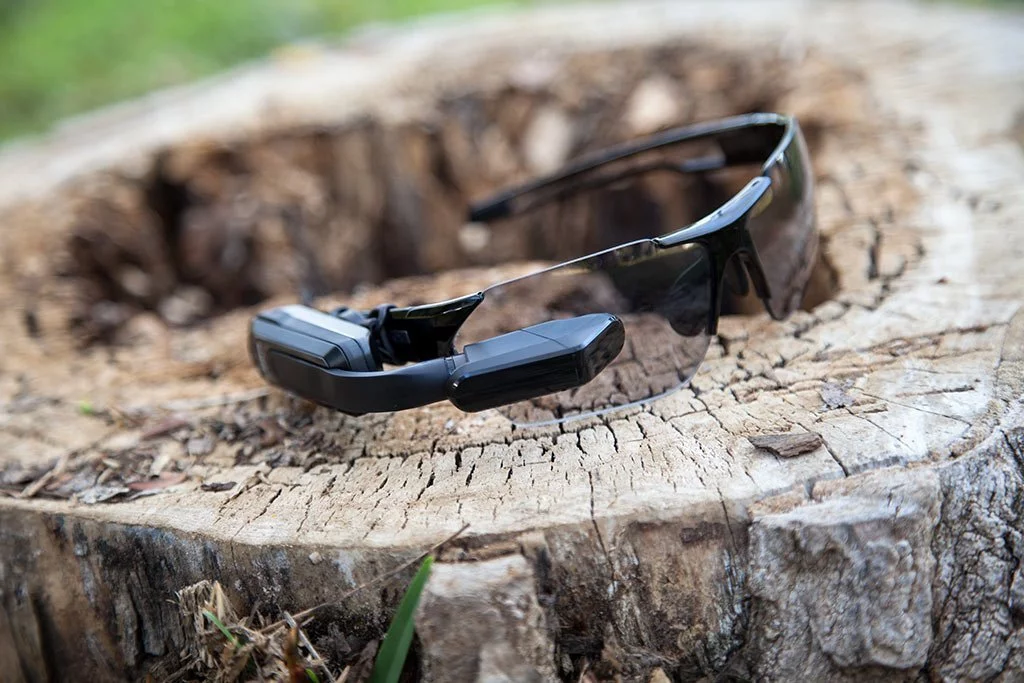
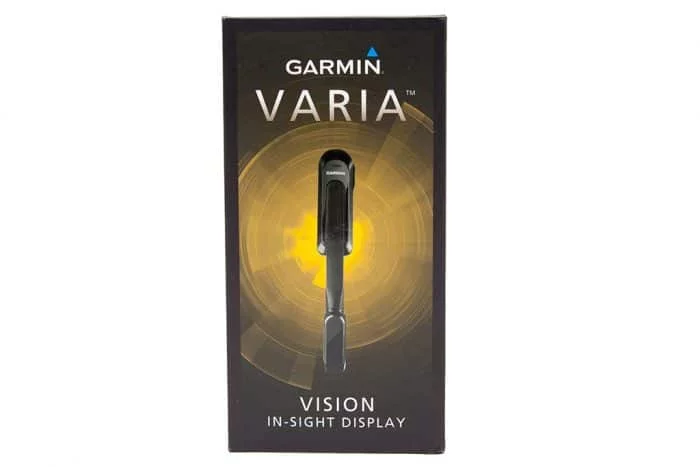
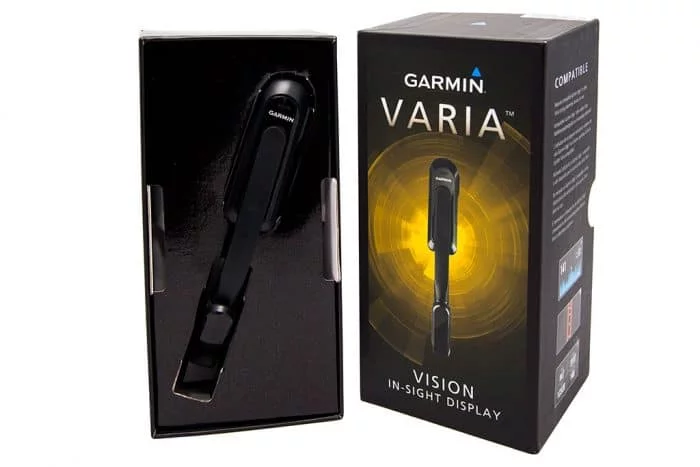
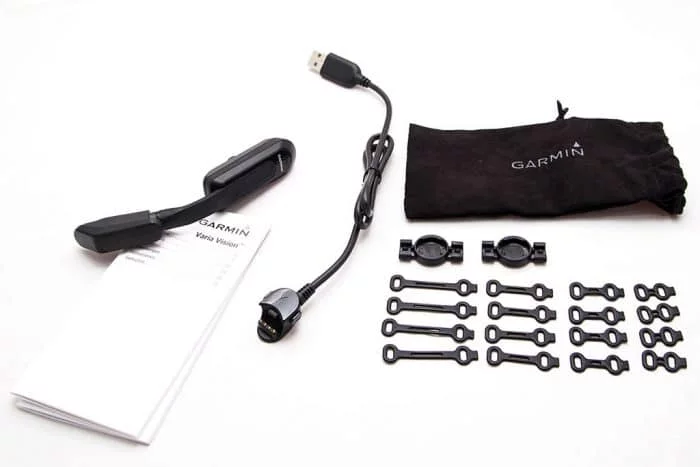
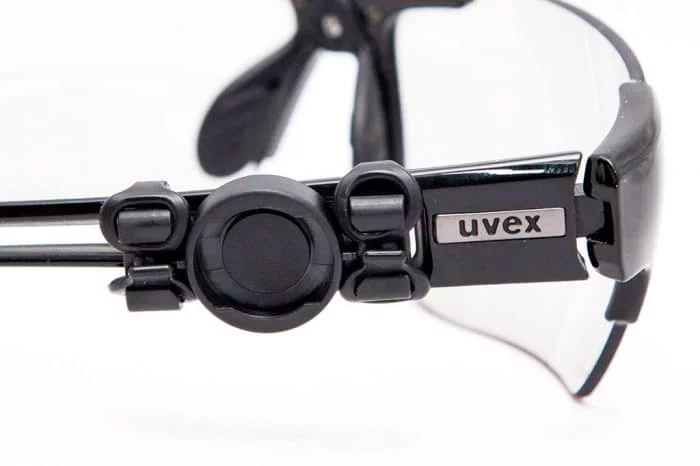

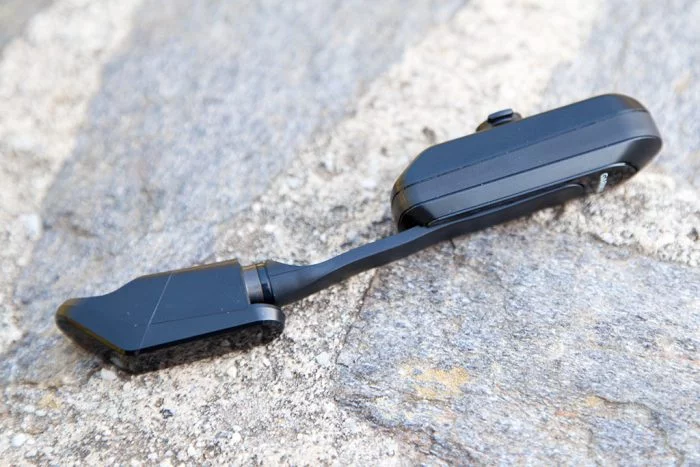
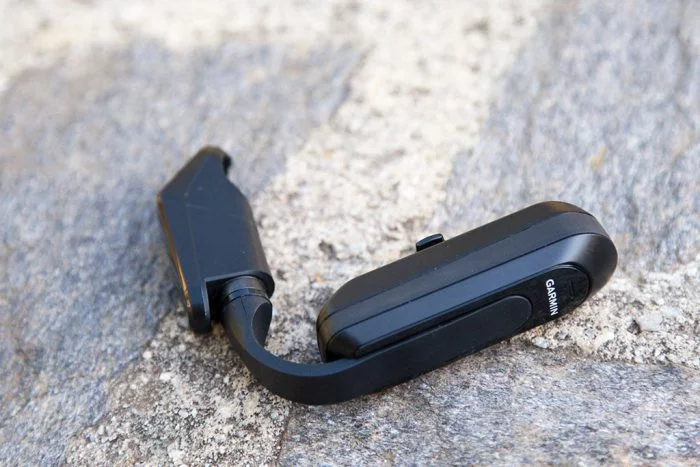
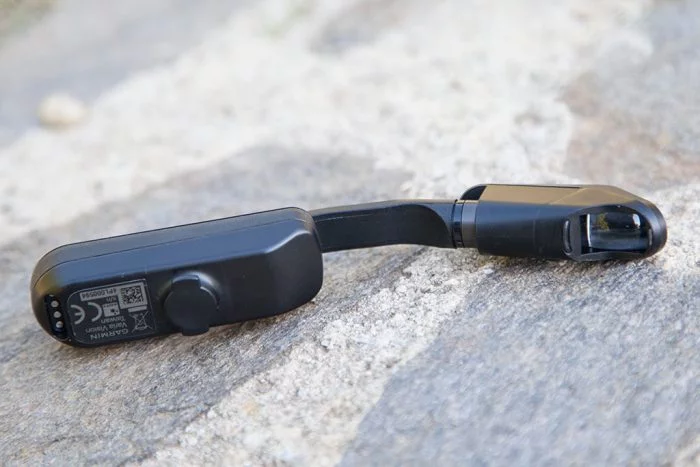
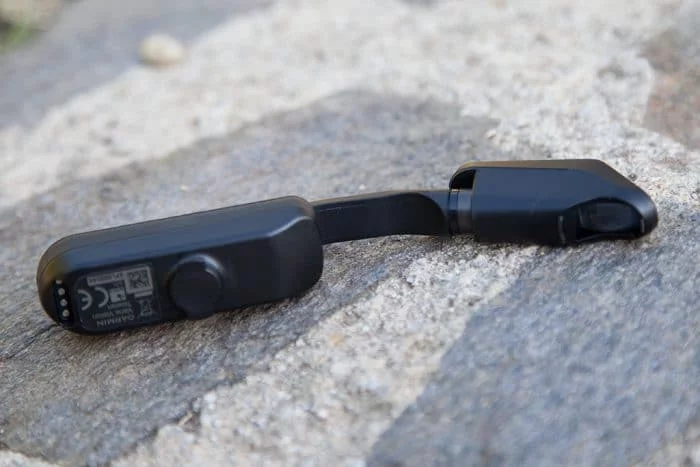
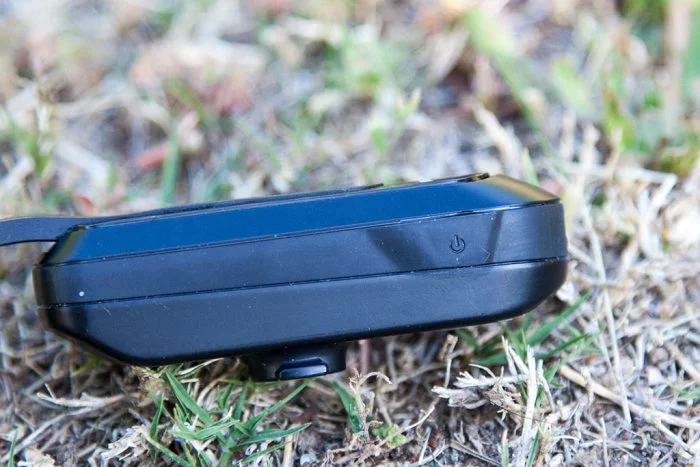
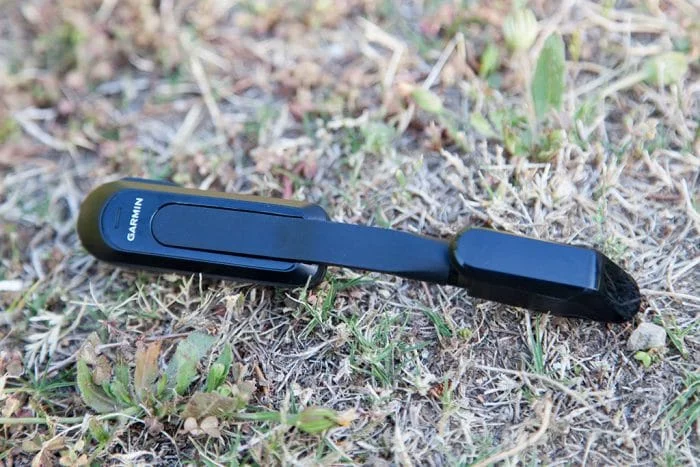
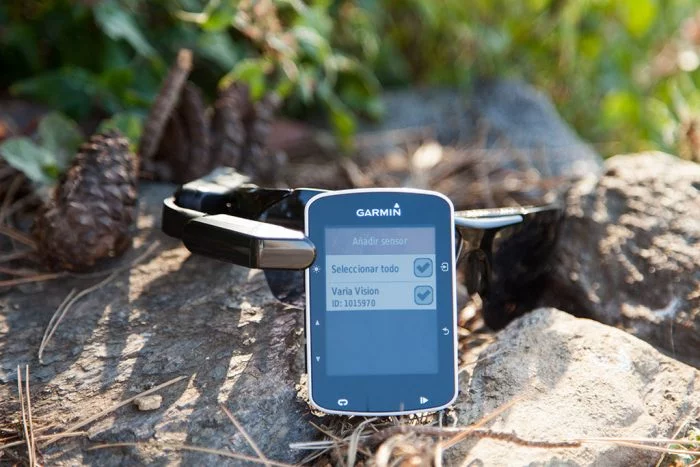
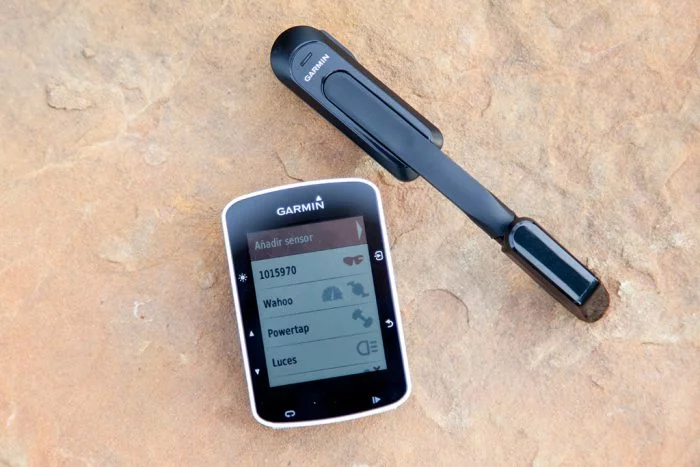
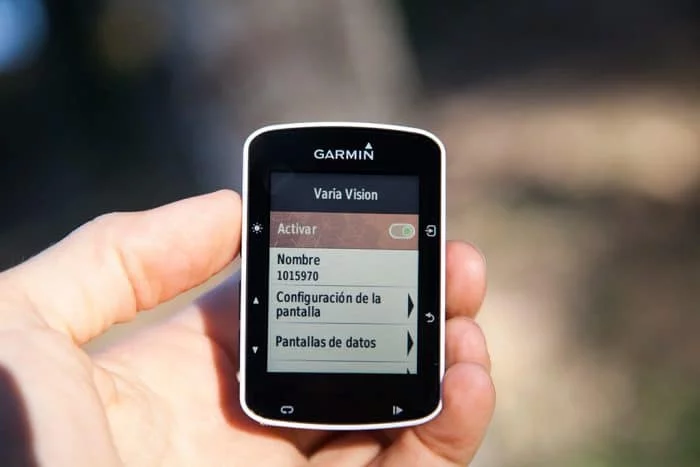
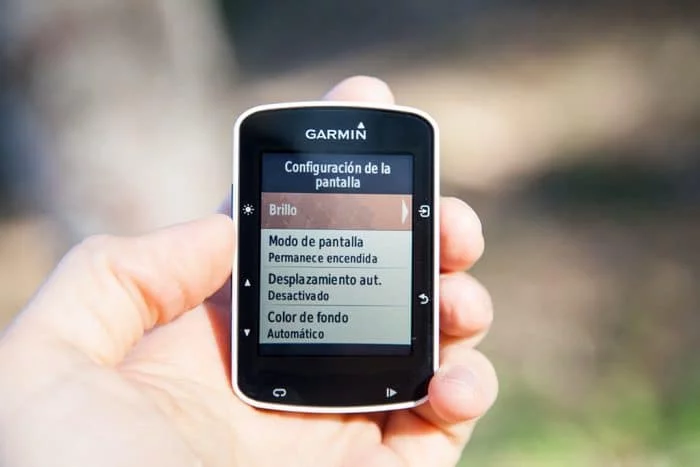
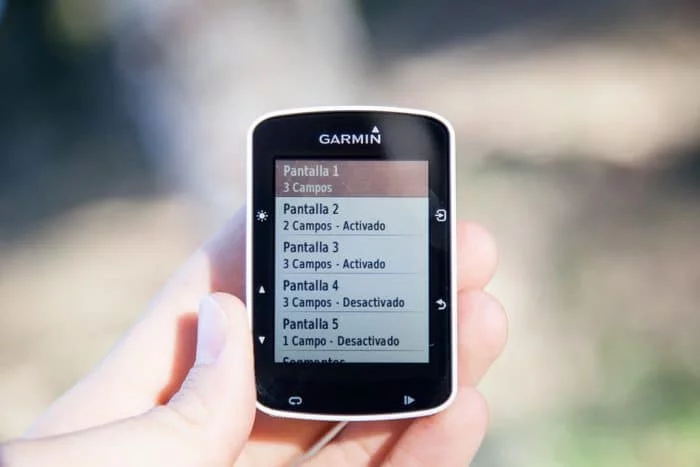
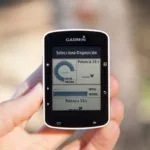
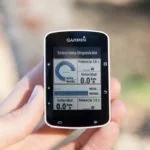

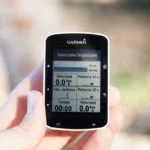
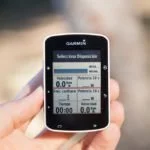
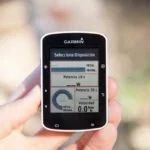
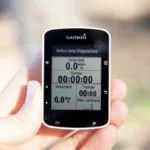
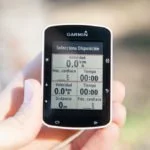
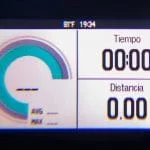
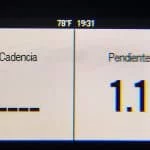
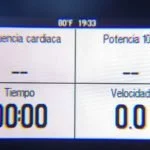


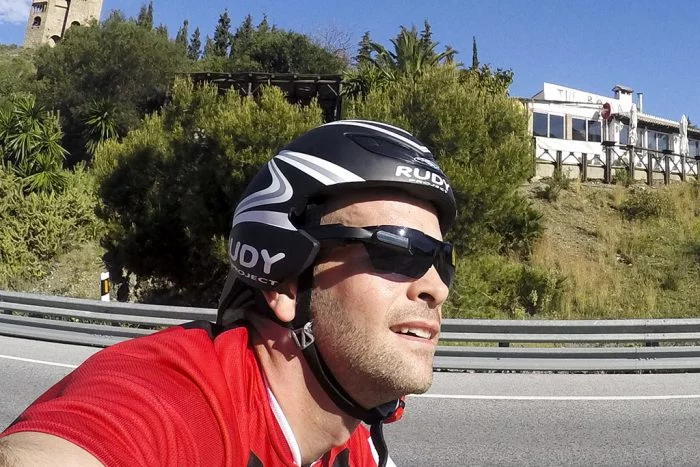
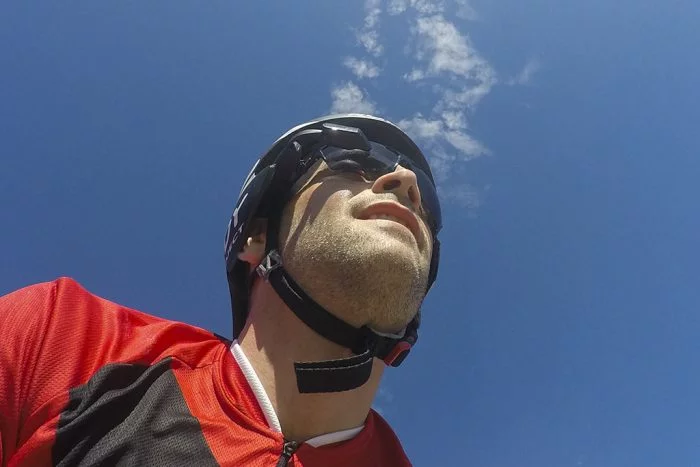
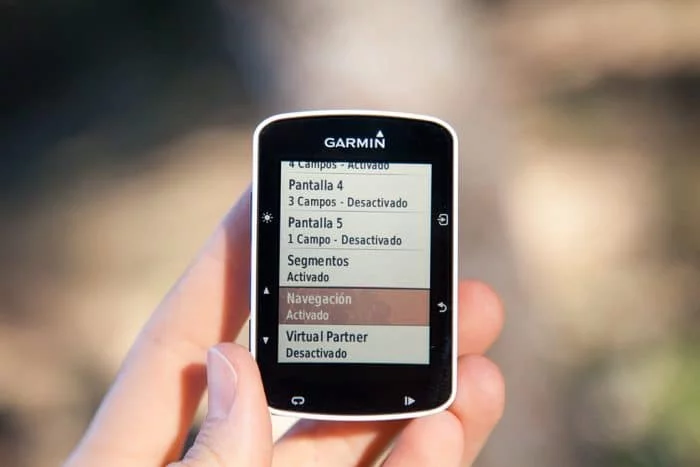
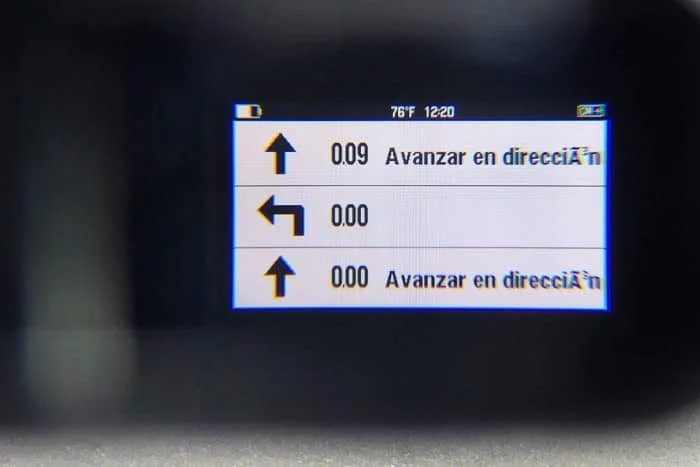
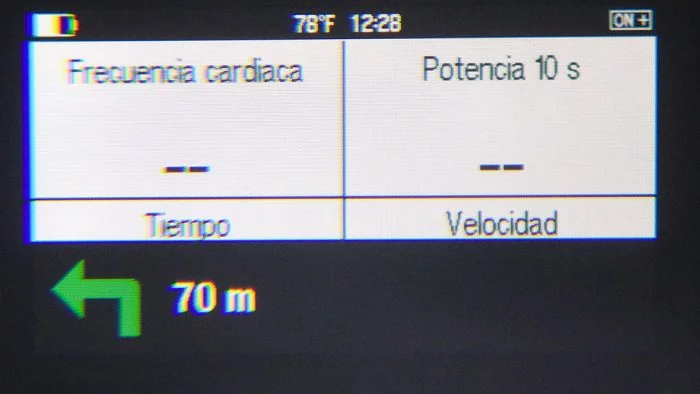
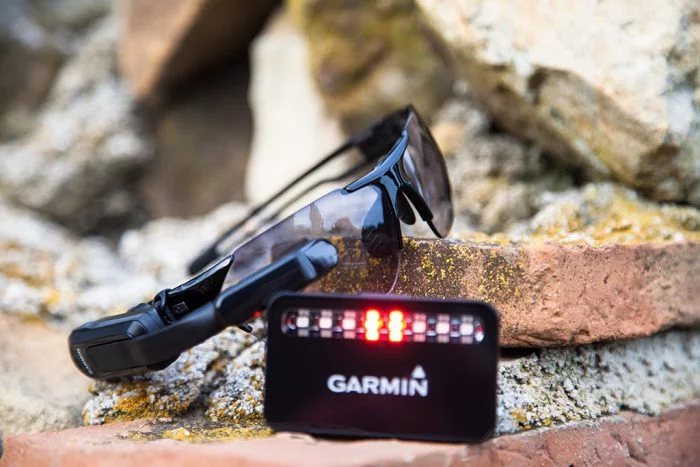
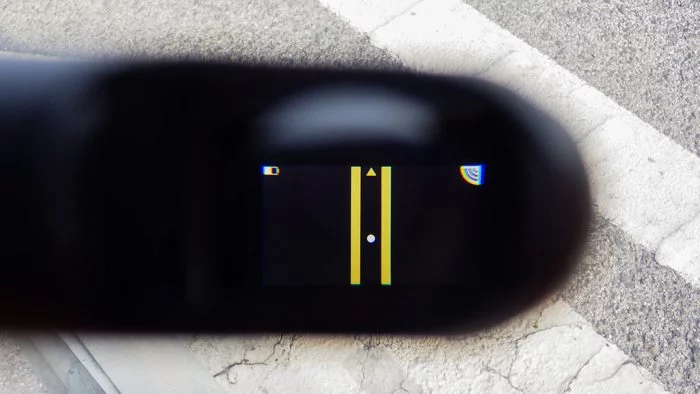
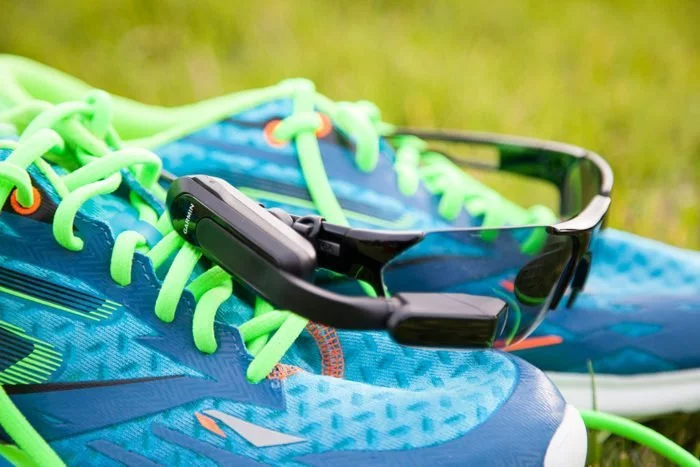
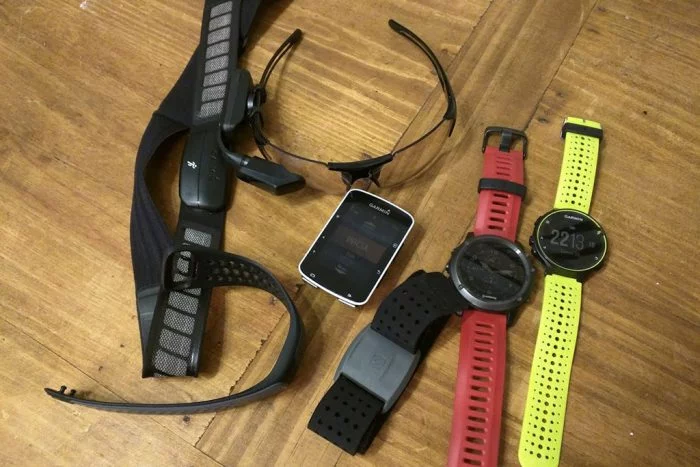
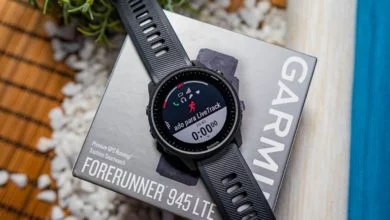
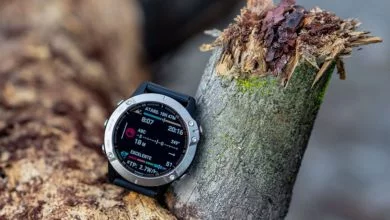
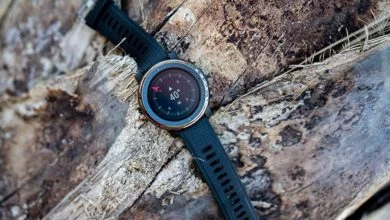
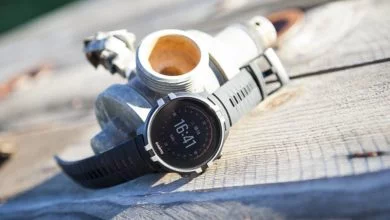
Gran review inicial. Para mi es un producto muy muy verde. A parte de parecer un superguerrero (bola de dragón), me parece un trasto que genera más problemas que beneficios. Deberían aliarse con un fabricante de gafas, y sacar unas oakley o similar con todo el sistema integrado en la patilla de la gafa y la pantalla en el propio cristal. (Por 400€ ya te pueden dar unas gafas dignas. Hace tiempo ya sacaron las Oakley Airwave y no triunfaron, incluso con soporte remoto para Garmin VIRB…)
Para que funcionen:
1º tendrían que ser estéticas.
2º que no quitaran campo de visión alguno.
3º en lugar de minipantalla pegada, que toda la lente fuera pantalla en el cristal semi-transparente (de ahí la idea de head-up display, y con números grandes, que den la info más relevante). Si la llenas de gráficas, números y muñequitos pierde el sentido..
Luego ya se podría soñar más, pero de momento es un trastito pegado en la gafa, es más rápido mirar el manillar y de un vistazo ves todo sin mareos. Sin embargo coincido que el Garmin VARIA es una pasada, se podrá mejorar, pero de entrada es de una utilidad increíble…
Gracias Toni
Creo que lo más interesante es, precisamente, no estar acoplado a unas gafas determinadas. Ya hay otro tipo de productos que son eso mismo, unas gafas con la funcionalidad integrada. Pero lo bueno de la propuesta de Garmin es poder acoplarlo en diferentes monturas (incluso con gafas graduadas).
Muy buenas. Ha llovido ya desde que salió esta versión y cada vez se le ve más potencialidad si logra reducir alguno de sus peros (peso y precio, los dos principales). Por ejemplo, sería excelente asociada a potenciómetro de carrera, pues exige romper el gesto de braceo para consultar el reloj. NO sé si Garmin u otra marca habrá programado algo más evolucionado, pero, ya digo, la potencialidad está ahí. Gracias por tus post.
Un saludo.
Buff vaya pasada lo que me pregunta si a la hora de montar en bici no sera peligroso y te quitara visión por lo que he podido ver en el video.